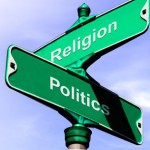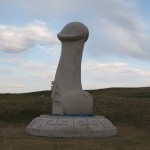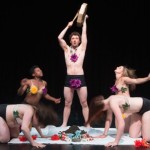What does it mean to me to be Neopagan? Part of it is believing certain things about the world, humanity, divinity, and life. Here is my Neopagan credo. This is not an attempt to define Neo paganismfor anyone else. This is just (part of) what being Neopaganism means to me.
1. PANTHEISM: “God” is found in the world: in nature, in our selves, and in other people. “God” is not something outside of us, but something we are a part of. The concept of a transcendent creator is rejected.
2. CREATION SPIRITUALITY: These things are sacred: all life, the earth, nature, our selves, our bodies. The notion of the fallen nature of creation and humankind are rejected.
3. POLYTHEISM: The seemingly infinite diversity of manifestations of divinity in nature and in human thought cannot be fully expressed by any single symbol or metaphor. Thus, divinity can be experienced plural. The human personality is also fundamentally plural, or multi-vocal. We should not reject any aspect of the personality, but seek to find sacred time and sacred space for the expression of all aspects of our personality, including male and female, light and dark, constructive and destructive.
4. GODDESS: While the divine transcends gender, it can manifest masculine and feminine symbols and metaphors. To the extent that it is symbolized as male, it is can also be symbolized as female, a Goddess as well as God. The mysteries of both sexes and all sexual orientations should be honored. Women may exercise religious power as effectively as men.
5. PROCESS THEOLOGY: The essential nature of the world and God is change. Consequently, no account of the world, of God, or of any of us is ever complete.
6. CYCLES: This changing nature of the world, of God, and our own selves often follows a pattern, one which is cyclical or spiral. We can strive to attune our selves to these rhythms.
7. VIOLENCE: While we can chose life-affirming values, we should recognize that life and nature are both beautiful and savage. We should honor violence as a part of the cycle of life, but only when it is creative.
8. CORPO-SPIRITUALITY: Embodied life is good. The sensual aspects of life should be enjoyed. The body is a source of wisdom to which we should listen. No guilt or shame should be attached to sexual desire or consensual sexual activity. On the other hand, sacred sexuality should be distinguished from vulgar commercialization of sexuality.
9. THIS-WORLDLINESS: Life should be lived as an end in itself. The meaning of life is not to be found in a future existence of a different metaphysical character. We should live in the here-and-now and seek no other world and look forward to no other life. We can seek the divine in the midst of life. We can approach the divine, not by transcending the human, but in seeking to become more fully human.
10. POSITIVE ETHIC: We should embrace a positive ethic of freedom to satisfy individual needs and desires and to pursue personal growth and happiness, while working to avoid harm to others and seeking harmony with the earth and human, as well as non-human, communities. Notions of divinely prescribed law and concepts of sin or salvation are rejected. Notions of salvation and perfection are replaced with notions of healing and wholeness.
11. HUMANISM: Good and evil should only be defined in human terms. Any ethical discussion should begin with humans not God, with nature not the supernatural. Moral values should be derived from human needs and interests, rather than theological or ideological abstractions. Ideas divorced from human experience are dangerous and can be used to justify terrible evil.
12. RE-ENCHANTMENT: Our natural state is one of connection, not alienation: connection to divinity, to earth, and to one another. However, we often experience alienation or “rootlessness” or “homelessness” in our own psyches and in our culture, which is the inheritance of modern humankind. This is manifest in social injustice, patriarchalism, and neurosis. This alienation can be healed through reconnecting with the sacred dimension of nature and our own selves.
13. RITUAL: Rituals and myths can be used to choreograph a re-sacralization of our experience, our lives, and the world.
14. PAGANISM: The pre- and non-Christian religions of the world can be turned to for symbolism, kinship, and inspiration.











